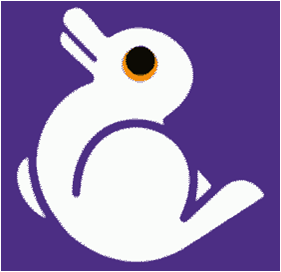The human being is a sponge who absorbs the changes of the physical world surrounding him. Actually, if the physical world had been unchanging, we wouldn’t need to receive sensations on the world that surrounds us since all would be static and everything would definitely have its final place!
Our sense organs continuously check, then, the changes of our immediate environment to allow us to act and react in keeping with it. If we see a wall in front of us, for example, we won’t charge into it, of course, but try to avoid it! Our senses however detect only a part of the reality – the most useful for us - and translate it in an ‘analogical’ way. Yes, our senses work analogically... For instance, it’s difficult to consider a single color in a distinct way, but always in relation to others. The same red color will be perceived differently according to the content or the context where it lies within.
Every living being has a ‘repertoire’ of sense organs which is peculiar to him, with a particular predilection for one or two sense organs: the human being favors sight; the dog, smell; for bats, it's hearing… Concerning the color’s perception, animals do not all see in the same way because they aren’t perceptive to the same part of the luminous spectrum. Here are two extreme cases: insects, for example, see the ultraviolet rays, while on the other hand, some snakes can perceive infrared rays.
However, interpreting what our senses perceive is not an innate thing, our brain has to learn to decode the steady stream of sensorial information (the stimuli) in order to transform them into something ‘comprehensible’. People born blind that recover sight, do not immediately understand what they see and have to face up to a long period of rehabilitation and discouragement before getting accustomed to seeing like everybody else.
I’ve always been fascinated and impressed by how people with partial or total visual sensory deficiencies interact with the world. We cannot talk about visual perception or optical illusions without mentioning the other side of the coin. To understand how these people ‘see’ without sight, is to understand just how important our sense of sight is (unfortunately sometimes we don’t do it justice or give it the importance it deserves) and how it collaborates and integrates with the other sense organs. When we see, walk, speak, feel, and touch all at the same time what is it that links our sight with the sense of touch or hearing, have you ever asked yourself? The reality is we actually see very little: only that which we are concentrating on or find important. Man without the crutches of the other sense organs would truly be lost, because it is they that permit us, subconsciously, to go about our everyday lives. An experiment demonstrated how at times we are really ‘blind’ in the truest sense of the word. In this famous experiment on “inattentional blindness” performed in 1999, Daniel Simons and Christopher Chabris asked people to watch a video clip and count the times one of two teams of basketball players took possession of the ball. Many people (around 40 percent) didn’t notice at all a man in a gorilla suit entering stage right, doing a jig in the centre of the screen and then leaving, stage left. The clip demonstrated how we don’t see what we don't pay attention to, even when it is in front of our eyes!
The eyes are one of the panes of the window on the world, the other panes are called hearing, touch, smell, and taste. It is good therefore, that when one of these panes gets broken, it becomes replaced by one of the others that we have, and it is how we learn to see with our hands and move with our hearing...
Gianni A. Sarcone
Artist and Author of
"Big Book of Optical Illusions"
















